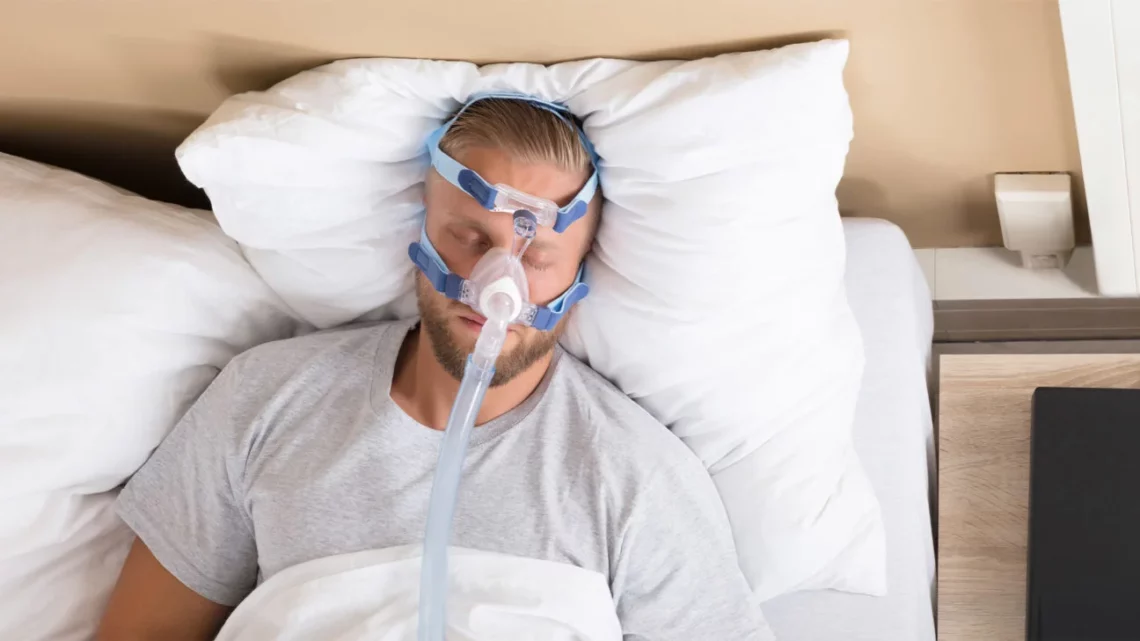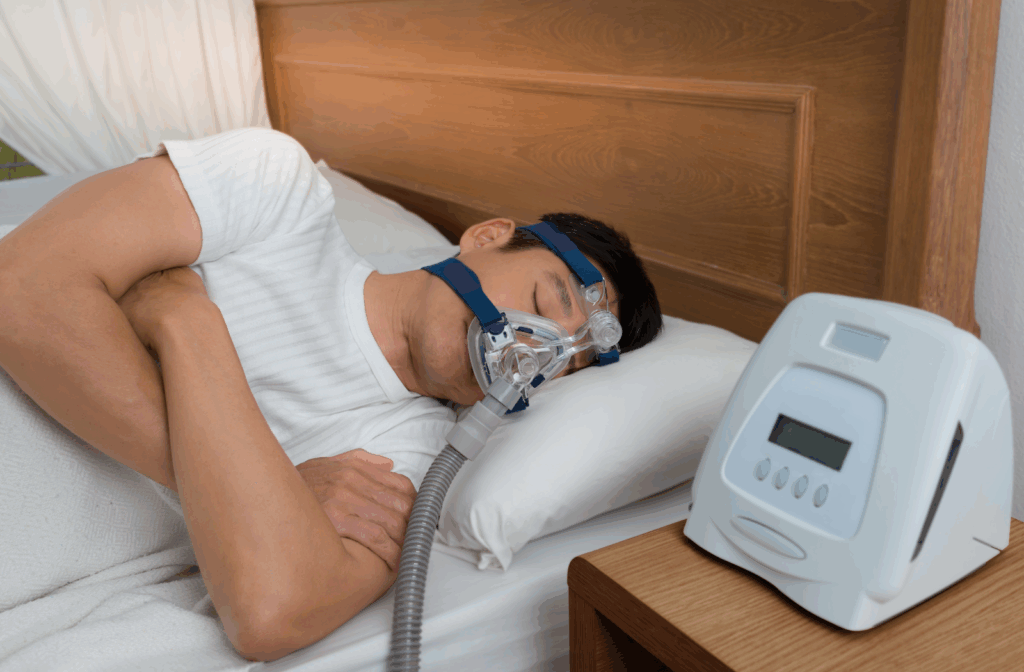
Mastering Maintenance: Top Tips for Keeping Your CPAP Mask in Prime Shape
Continuous Positive Airway Pressure (CPAP) therapy is a widely used treatment for obstructive sleep apnoea. For many individuals, a CPAP mask is an essential component of this therapy. However, to ensure optimal performance and comfort, regular maintenance of the mask is crucial. This article provides essential tips for keeping your CPAP mask in prime shape, ensuring you get the most out of your therapy.
Understanding the Importance of CPAP Mask Maintenance
Maintaining your CPAP mask is not merely about cleanliness; it plays a vital role in your overall health and the effectiveness of your treatment. A well-maintained mask ensures a proper seal, which is essential for the therapy to work correctly. Additionally, a clean mask reduces the risk of skin irritations and infections, enhancing your comfort during sleep.

Health Benefits of a Clean Mask
Regular cleaning of your CPAP mask can significantly reduce the risk of respiratory infections. Masks can accumulate dust, allergens, and bacteria, which can be detrimental to your health, especially for those with pre-existing respiratory conditions. By keeping your mask clean, you create a healthier sleep environment that promotes better overall well-being. Furthermore, the presence of mould or mildew can lead to unpleasant odours and can exacerbate allergies, making it essential to incorporate a routine cleaning schedule into your daily life. Using mild soap and warm water, or specialised cleaning solutions, can effectively eliminate these harmful substances while prolonging the lifespan of your equipment.
Read more at: Easy Ways to Buy CPAP Mask Online Without Sacrificing Quality
Enhancing Comfort and Efficacy
A well-maintained CPAP mask provides a better fit and comfort level. Over time, masks can become worn or damaged, leading to leaks that compromise the effectiveness of the therapy. Regular checks and maintenance can help identify issues early, ensuring that the mask continues to function as intended. Additionally, it is important to replace parts of the mask, such as cushions and headgear, as they can degrade over time. A comfortable fit not only improves compliance with therapy but also enhances the quality of sleep, allowing users to wake up feeling refreshed and energised. Moreover, experimenting with different styles and sizes of masks can lead to discovering a more suitable option that aligns with individual preferences and sleeping positions, further optimising the CPAP experience.
Daily Cleaning Routine
Establishing a daily cleaning routine is essential for maintaining the integrity of your CPAP mask. This routine does not need to be time-consuming, but consistency is key.

Washing the Mask
Every day, it is advisable to wash the mask components, including the cushion, frame, and any removable parts. Use mild soap and warm water to gently scrub the mask. Avoid harsh chemicals and abrasive materials, as these can damage the mask. Rinse thoroughly to ensure no soap residue remains, which could irritate the skin during use. Read more about chemicals at https://fazaiamedical.edu.pk/department-of-pathology/
Drying the Mask
After washing, allow the mask to air dry completely before reassembling it. Placing the mask in direct sunlight is not recommended, as UV rays can degrade the materials over time. Instead, find a clean, dry area where the mask can dry naturally.
Weekly Maintenance Tasks
In addition to daily cleaning, certain maintenance tasks should be performed weekly to ensure optimal performance.
Inspecting for Wear and Tear
Take the time each week to inspect your CPAP mask for any signs of wear and tear. Look for cracks, tears, or any changes in the material that may affect the fit. If any damage is found, it is essential to replace the mask or the affected components promptly. Continuing to use a damaged mask can lead to leaks and ineffective therapy.
Cleaning the Headgear and Straps
The headgear and straps also require attention. These components can accumulate oils and dirt from your skin and hair. Wash them weekly using a similar mild soap solution, ensuring they are thoroughly rinsed and dried before reattaching them to the mask. Properly cleaned straps will maintain their elasticity and provide a secure fit.
Monthly Deep Cleaning
In addition to daily and weekly maintenance, a monthly deep cleaning is recommended to keep your CPAP mask in top condition.
Disassembling the Mask
Once a month, disassemble the mask completely. This allows for a thorough cleaning of all components, including those that may not be cleaned regularly. Refer to the manufacturer’s instructions for guidance on how to safely disassemble your specific mask model.
Using a CPAP Cleaner
Consider investing in a CPAP cleaner, which can simplify the deep cleaning process. These devices use ozone or UV light to disinfect the mask and other components effectively. While they can be a bit more expensive, they offer a convenient solution for maintaining cleanliness without the need for extensive manual cleaning. Click here to find more about disinfect.
Storage Tips for Your CPAP Mask
Proper storage of your CPAP mask when not in use can prolong its lifespan and maintain its integrity.
Avoiding Contaminants
When not in use, store your CPAP mask in a clean, dry place away from dust and contaminants. Avoid placing it in areas where it may be exposed to pets or other potential sources of dirt. A dedicated storage bag or container can be beneficial for keeping the mask clean and protected.
Temperature Considerations
Extreme temperatures can affect the materials of your CPAP mask. Avoid storing it in places that experience high heat or extreme cold, such as a car or an unheated garage. A stable, moderate temperature will help maintain the mask’s shape and functionality.
Recognising When to Replace Your CPAP Mask
Even with diligent maintenance, CPAP masks do not last indefinitely. Knowing when to replace your mask is crucial for ensuring effective therapy.
Signs of Wear
Look for signs that indicate it may be time for a replacement. If you notice persistent leaks that cannot be resolved with adjustments, or if the mask feels uncomfortable despite cleaning, it may be time to invest in a new one. Additionally, if the cushion has become hard or cracked, it is likely time for a replacement.
Manufacturer Recommendations
Most manufacturers recommend replacing CPAP masks every six months to a year, depending on usage and care. Always refer to the specific guidelines provided by the manufacturer for your mask model to ensure you are adhering to their recommendations.
Consulting with Your Healthcare Provider
Regular consultations with your healthcare provider are essential for optimising your CPAP therapy. They can provide guidance on the best maintenance practices and help you determine when it’s time for a new mask.
Addressing Comfort Issues
If you experience discomfort or difficulty achieving a proper seal, discuss these issues with your provider. They may suggest adjustments to your mask or recommend a different model that better suits your needs.
Staying Informed
Healthcare providers can also keep you informed about new products or technologies that may enhance your CPAP experience. Staying updated on the latest advancements can lead to improved comfort and efficacy in your therapy.
Conclusion
Maintaining your CPAP mask is an essential aspect of ensuring effective therapy for sleep apnoea. By establishing a consistent cleaning routine, performing regular inspections, and knowing when to replace your mask, you can significantly enhance your CPAP experience. Remember that your health and comfort are paramount, and taking the time to care for your equipment will pay dividends in the quality of your sleep and overall well-being.
Investing effort into the maintenance of your CPAP mask not only prolongs its lifespan but also optimises your treatment. With these tips in hand, you can master the art of CPAP mask maintenance and enjoy the restful sleep you deserve.

